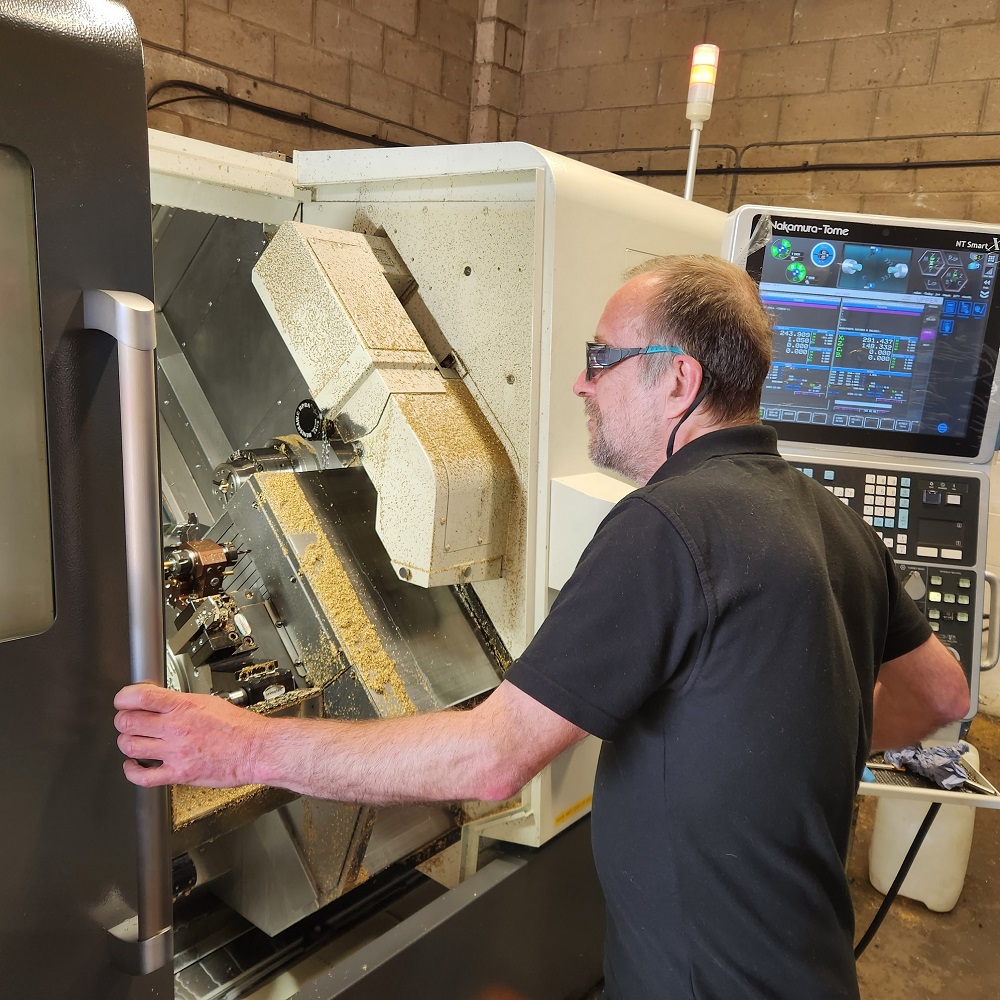Despite only opening its doors for business in 2002, Oakley CNC Machining has undergone a major transitional shift in its machine tool technology in recent years to support its relentless growth trajectory. Initially starting with Herbert capstan lathes and a selection of two-axis CNC turning centres, the company has rapidly evolved its investment strategy, with the latest acquisition being a Nakamura-Tome WT150IIF twin-spindle twin-turret turning centre from the Engineering Technology Group (ETG).
Already progressing through a transition period, it was the company acquisition by Ian Oakley in 2015 that led to an acceleration in capital equipment investment. Unfortunately, the performance, capabilities and service support from some machine tool vendors fell short. With an order book continually filling and capacity at a premium for the Burton-upon-Trent subcontractor, the company searched the market for a twin-spindle turning centre – and it was the Nakamura-Tome WT150IIF that caught its attention.
Oakley CNC Machining’smanaging director Ian Oakley says: “We’ve taken full advantage of the 130% super-deduction tax allowance and invested in several high-end CNC turning and milling centres. However, not all acquisitions have performed as we would have liked. As we have several new projects that require production volumes of 10,000+, we needed a high-performance turning centre to absorb the volume.The Nakamura was the perfect choice.”
Oakley CNC Machining searched for a twin-spindle, twin-turret turning centre with an intuitive CNC interface that could offer both conversational and G-code programming.
“We wanted a user-friendly machine capable of machining the range of parts we produce, but we got so much more,” reveals Oakley.“One factor that drew us to the Nakamura is the oscillating servo [oscillation cutting] that prevents long strings of swarf and enables us to extend our unmanned running. This was particularly important as we have a family of nylon parts required in production runs up to 10,000-off. Required for the rail industry, the project involves a family of 40mm diameter parts up to 100mm long that we can set up on the Nakamura and leave to run for days without manual intervention. In fact, it was the swarf-breaking technology and the ability to run long unmanned periods that won this contract for our business.”
Before the arrival of this project, the initial prompt to invest in the robust turning centre was in fact a brass electronic component for the construction and earthmoving equipment sector. The company regularly machines the brass electronic part in batches of up to 15,000.
Discussing this component and why the Nakamura WT150IIF was needed, Oakleysays: “This part was being machined on an existing twin-spindle turning centre, lights out, but we were having issues keeping the component in pristine condition with no marks. The existing machine has a traditional parts catcher with swarf deposited in the parts catcher area from machining. The parts, when ejected, land on top of the swarf, which is far from ideal. In contrast, the Nakamura has a robotic arm that unloads the parts very gently and ‘places’ them into a separate unloading conveyor belt. This capability in itself is a big bonus, but coupled with the benefit of having an extra turret, we’ve reduced cycle times from 3.5 minutes to 1.5 minutes. Considering the batch sizes, we’re now saving just over 500 hours per batch.”
He continues: ‘’We previously machined another aluminium part for the food processing industry on our existing twin-spindle machine that is just over 200mm long. This part needed four different operations due to the sub-spindle bar capacity being very limited, incurring significant set-up time and taking a lot of capacity from our machine shop.The overall cycle time was 6.5 minutes. We’re now able to produce these on the Nakamura with a cycle time of 3.5 minutes in one-hit.’’
As a long-running project that has been ongoing for more than three years, the Staffordshire manufacturer was struggling to keep up with demand prior to the arrival of the WT150IIF. The major saving on this project for the ISO9001-accredited company is not just the cycle time but the reduction in set-ups, the ability to free capacity from other machines and the reduction in manual intervention.
“It was a labour- and machine-intensive process,” states Oakley.“Now, we can set the job on the WT150IIF and it will run unmanned 24 hours a day for up to two weeks with the swarf-breaking technology. All we have to do is feed the bar into the machine and collect the finished parts from the other end. The stability of the machine also means that we don’t even have to change the tools in a two-week long production run.”
As the company gains familiarity with the machine following its arrival at the end of 2022, it is moving more parts to the Nakamura.
“The brass and nylon parts are long series runs and we’re benefitting from the combination of the swarf-breaking technology and the one-hit capabilities of the WT150IIF,” says Oakley.“We are continually moving more jobs to the Nakamura and will likely need another machine in the near future.”
Discussing the service from ETG, Oakley concludes: “We have machine tools here from a range of vendors and the service, and the quality of the machines has been indifferent. It’s only been a matter of months since we installed the Nakamura, but we’re delighted with the machine and the service from ETG has been exceptional. If we have ever had any issues, the service team have jumped on the issues immediately. We are currently planning to double the size of our facility to nearly 700sqm, a move that will help facilitate our growth. When we have our new building, we’ll definitely be looking to purchase more Nakamura machines from ETG.”
For further information www.engtechgroup.com















